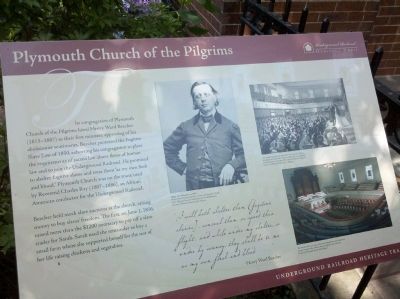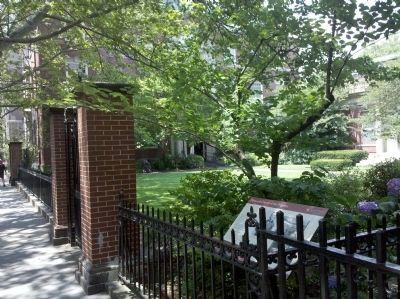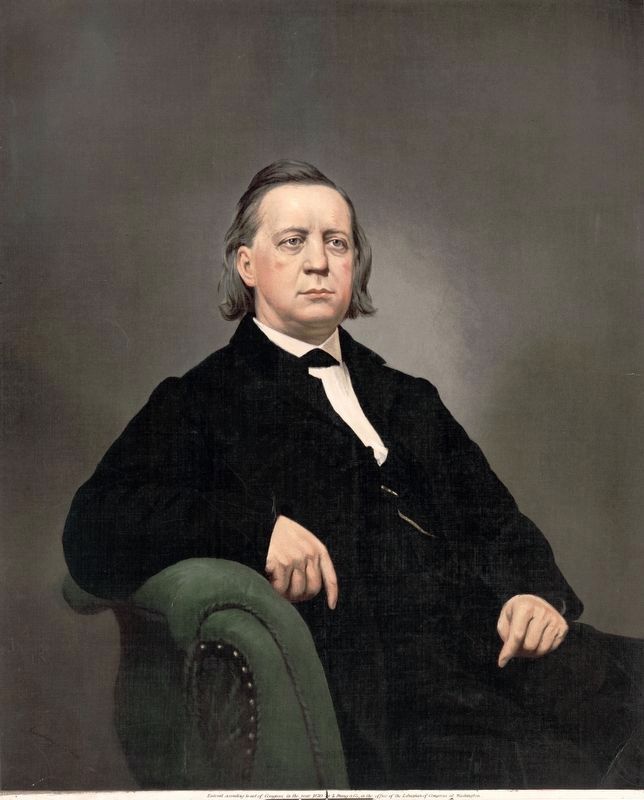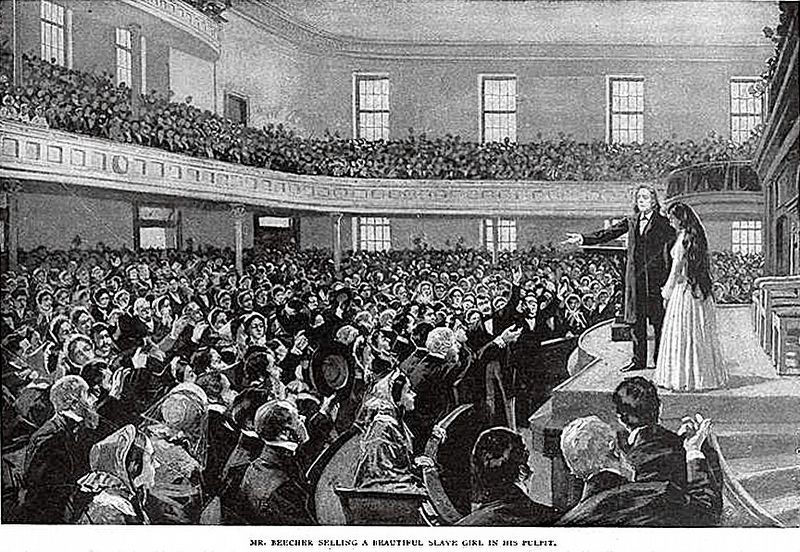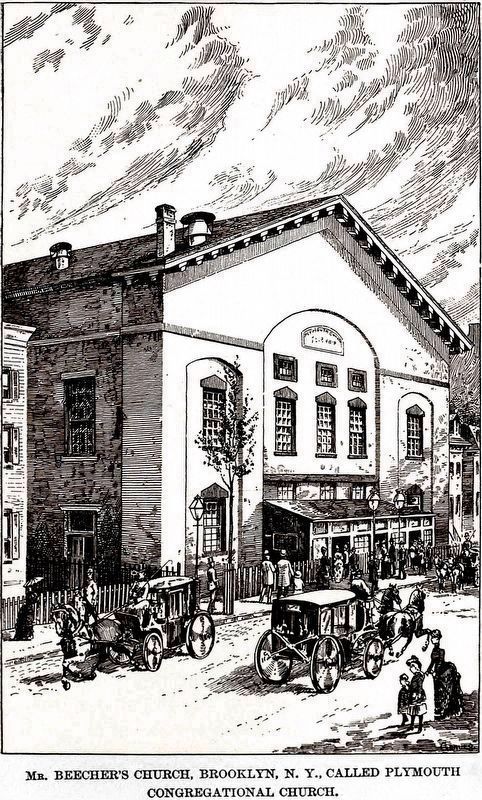Brooklyn Heights in Kings County, New York — The American Northeast (Mid-Atlantic)
Plymouth Church of the Pilgrims
Underground Railroad Heritage Trail
Beecher held mock slave auctions at the church, raising money to buy slaves' freedom. The first, on June 1, 1856, raised more than the $1200 necessary to pay off a slave trader for Sarah. Sarah used the remainder to buy a small farm where she supported herself for the rest of her life raising chickens and vegetables.
"I will both shelter them [fugitive slaves], conceal them,or speed their flight, and while under my shelter, or under my convoy,they shall be to me as my own flesh and blood...."
Henry Ward Beecher
Erected by New York State Office of Parks, Recreation & Historic Preservation.
Topics. This historical marker is listed in these topic lists: Abolition & Underground RR • African Americans • Churches & Religion. A significant historical month for this entry is June 1848.
Location. 40° 41.947′ N, 73° 59.621′ W. Marker is in Brooklyn, New York, in Kings County. It is in Brooklyn Heights. Marker is on Hicks Street. Though the church's address is on Hicks St. The marker is on the north side of Orange Street in the middle of the block. Touch for map. Marker is at or near this postal address: 75 Hicks Street, Brooklyn NY 11201, United States of America. Touch for directions.
Other nearby markers. At least 8 other markers are within walking distance of this marker. Brooklyn Heights Historic District (about 600 feet away, measured in a direct line); Fort Stirling (approx. 0.2 miles away); Edward Robinson Squibb (approx. 0.2 miles away); Brooklyn War Memorial (approx. 0.2 miles away); William Jay Gaynor (approx. 0.2 miles away); Walt Whitman (approx. 0.2 miles away); Eagle Warehouse (approx. 0.2 miles away); 155 - 157 - 159 Willow Street (approx. ¼ mile away). Touch for a list and map of all markers in Brooklyn.
Also see . . . Henry Ward Beecher - Wikipedia. (Submitted on August 5, 2010, by Bill Pfingsten of Bel Air, Maryland.)
Credits. This page was last revised on January 31, 2023. It was originally submitted on July 30, 2010, by Dorothea Krumme of Brooklyn, New York. This page has been viewed 1,304 times since then and 20 times this year. Photos: 1, 2. submitted on July 30, 2010, by Dorothea Krumme of Brooklyn, New York. 3. submitted on August 10, 2018, by Allen C. Browne of Silver Spring, Maryland. 4, 5. submitted on December 1, 2020, by Allen C. Browne of Silver Spring, Maryland. • Bill Pfingsten was the editor who published this page.
